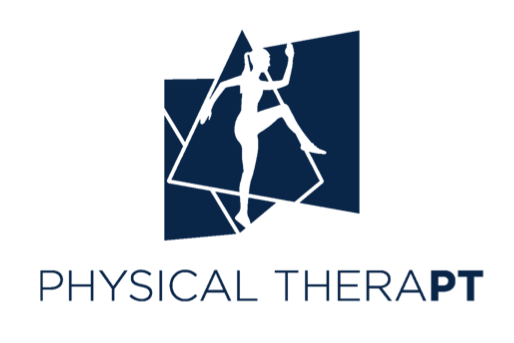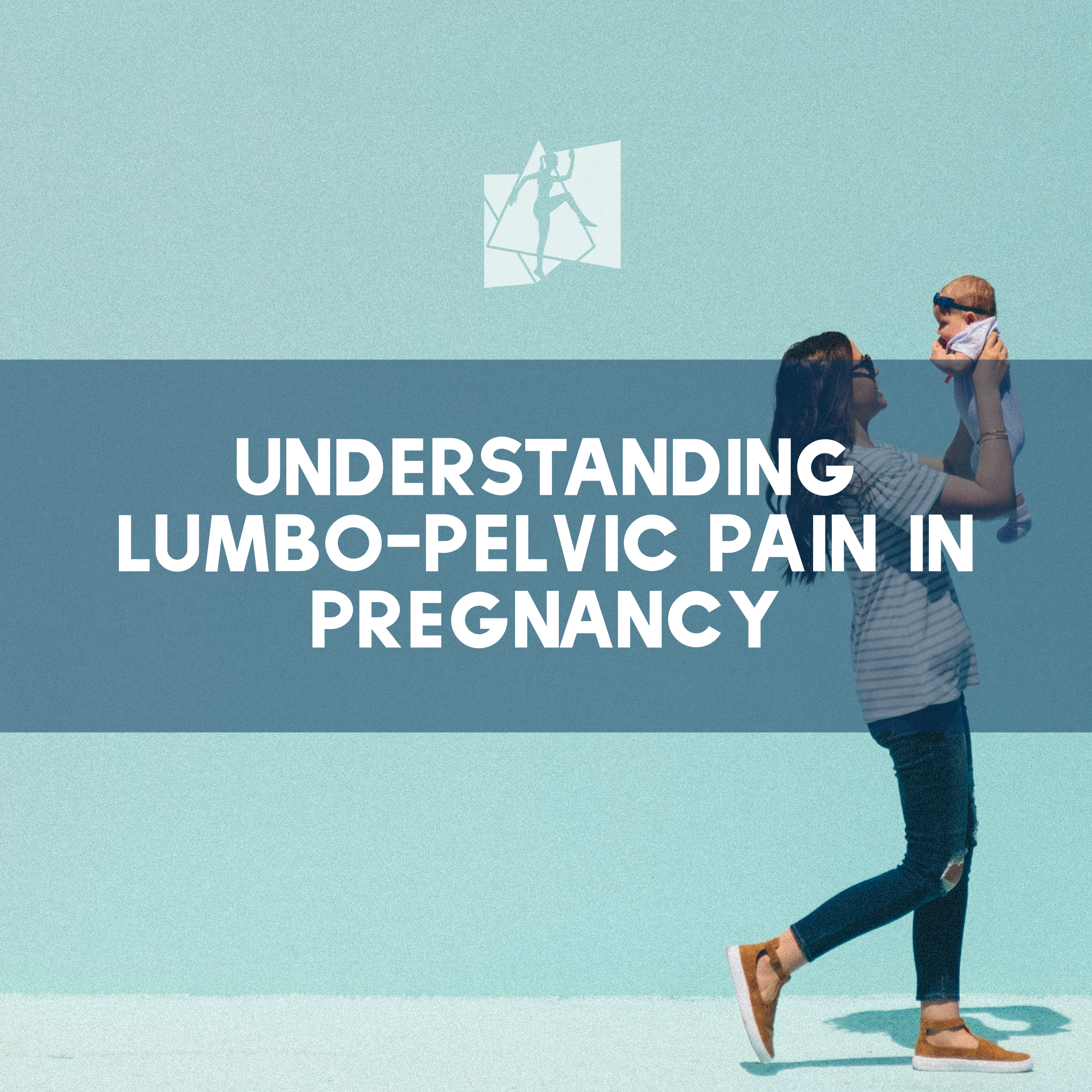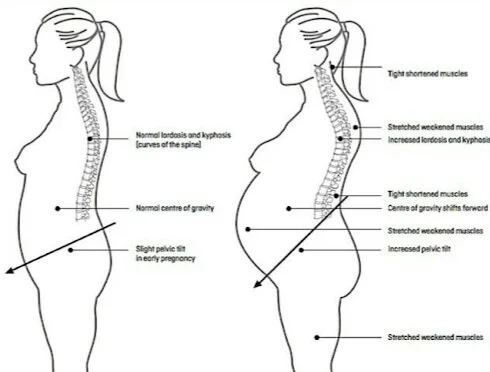During pregnancy, the most common complaints of pain are in the pelvic girdle, lumbar region, and hips, according to Sandi Gallagher, PT chair of the Certificate of Achievement in Pregnancy/Postpartum (CAPP-OB) Committee for APTA's Section on Women's Health. "In pregnancy, women are more predisposed to these conditions because of the ligamentous laxity that results from hormonal changes, and because a woman's center of gravity and body mass are changing," Gallagher explains. "So, any muscle weakness or joint instability that she had coming into the pregnancy increases her difficulty meeting the increased demands of her body's changes."
Image credit:Golden Gate OBGYN
As the size of the baby increases, a forward shift of the center of gravity occurs, as well as increases in the spinal curves and an anterior pelvic tilt. These changes lead to tight shortened muscles at the neck, low back, and hip flexors, with stretched weakened muscles at the mid-back, abdominals, and hamstrings.
Image Credit: Loving Parents
Similar to incontinence, women are often told that pelvic and low back pain are “normal” in pregnancy and will go away after childbirth. But this misinformation leads to women being in pain unnecessarily during pregnancy. The literature shows that if women have pelvic pain early on in pregnancy that isn’t treated, often it can become severe in the last trimester. In fact, “thirty percent of women who have untreated pelvic girdle pain during pregnancy, later become chronic pelvic pain patients”5
As long as pregnant women have clearance from their physician regarding more serious health issues, they can work with their PT to alleviate pain. Trained clinicians such as physical therapists and athletic trainers can teach them how to move, lift, sit, stand in ways that don’t cause pain, accommodating for the changes occurring in their body, as well as help build strength! Physical therapists can treat any pain pregnant women are experiencing, ranging from neck to shoulder, back to hip. As musculoskeletal experts, part of our job is teaching patients how to re-engage their body with the changes of pregnancy and move in a way that makes sense.
Exercise in pregnancy is healthy! The American College of Obstetricians and Gynecologists recommends 30 minutes of moderate intensity exercise most days of the week throughout pregnancy. Exercise promotes a faster recovery postpartum and a reduced risk for problems during pregnancy, such as gestational diabetes. Prenatal exercise even promotes healthier babies, like normalizing birth weight.
To learn more, check out these articles:
van Benten E, Pool J, Mens J, Pool-Goudzwaard A. Recommendations for Physical Therapists on the Treatment of Lumbopelvic Pain During Pregnancy: A Systematic Review. J Orthop Sports Phys Ther. 2014;44(7):464‐A15. doi:10.2519/jospt.2014.5098
Artal, R. And O’Toole, M. Guidelines of the American College of Obstetricians and Gynecologists for Exercise During Pregnancy and the Postpartum Period. British Journal of Sports Medicine. 2018 Apr 9, 6-12.
Perales M, Santos-Lozano A, Ruiz JR, Lucia A, Barakat R. Benefits of aerobic or resistance training during pregnancy on maternal health and perinatal outcomes: A systematic review. Early Hum Dev. 2016;94:43‐48. doi:10.1016/j.earlhumdev.2016.01.004
Irion, Jean M. EdD, PT, SCS, ATC; Irion, Glenn L. PhD, PT, CWS Water Immersion to Reduce Peripheral Edema in Pregnancy, Journal of Women's Health Physical Therapy: May/August 2011 - Volume 35 - Issue 2 - p 46-49 doi: 10.1097/JWH.0b013e318225f18a
“What to Expect When They're Expecting: PTs Who Treat Patients During & After Pregnancy” http://www.apta.org/ptinmotion/2017/12/feature/whattoexpect/




